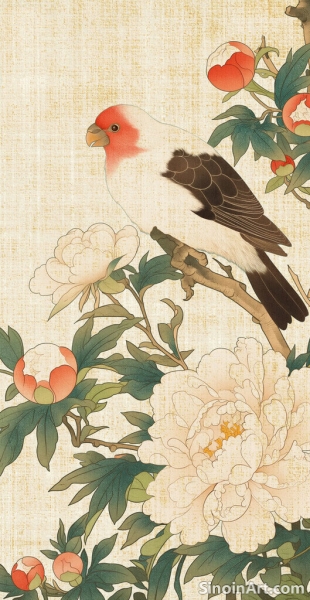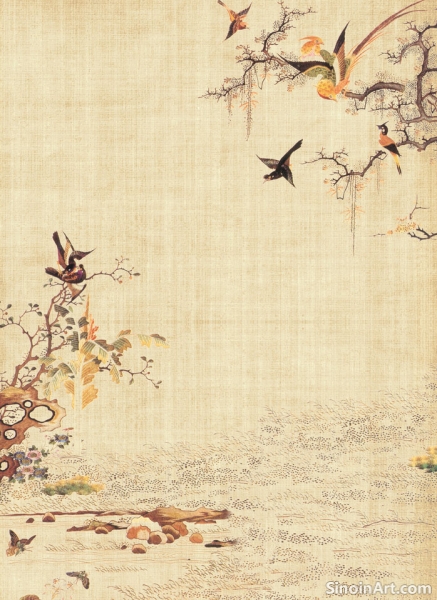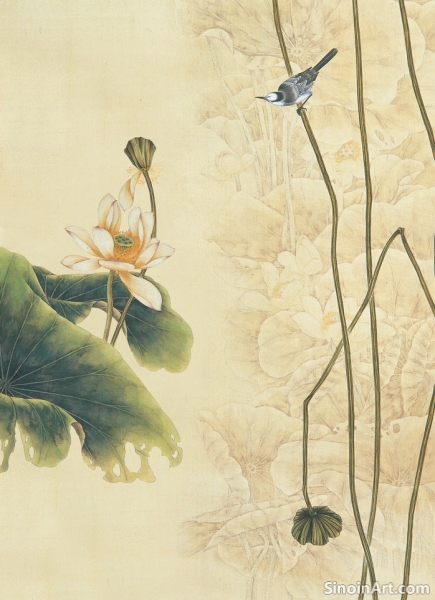Famous Gongbi Artists: Masters of the Meticulous Brush
|
Throughout history, numerous artists have mastered the intricate art of Gongbi painting, each leaving their unique mark on the tradition. Studying the works of these renowned masters provides invaluable insights into the history, techniques, and aesthetics of this art form. Their contributions have shaped the development of Gongbi and continue to inspire contemporary artists.  One of the most celebrated Gongbi artists of the Song Dynasty was Emperor Huizong (1082-1135), renowned not only for his own exquisite paintings but also for his patronage of the arts. Huizong’s bird-and-flower paintings, distinguished by their delicate precision and naturalistic details, remain among the most admired examples of the Song Dynasty style. His influence on the development of Gongbi painting is undeniable.  Li Tang (c. 1050-1130) was another important Song Dynasty master known for his landscape paintings, often using the meticulous Gongbi style to capture the grandeur of the natural world. His works showcase not only technical precision but also a deep understanding of composition and perspective. His landscapes have a timeless feel, showing the vastness of the natural world.  Qiu Ying (c. 1494-1552) was a Ming Dynasty painter renowned for his detailed figure paintings. His works feature scenes from literature and court life, depicting elaborate costumes, intricate architecture, and graceful figures. Qiu Ying’s paintings showcase a masterful command of line, color, and composition, demonstrating his innovative approach to the tradition. Chen Hongshou (1598-1652) was a late Ming Dynasty painter known for his expressive and distinctive style, which combined the meticulous detail of Gongbi with a more personal and gestural approach. His figure paintings are characterized by their stylized forms and bold color palettes, representing his unique approach to the traditional technique. He added a sense of personality and style to the Gongbi form. In contemporary times, there are many accomplished Gongbi artists who continue to push the boundaries of this traditional art form. Their works demonstrate the enduring vitality and relevance of Gongbi painting in the modern world. Studying the works of these masters and their successors is an invaluable experience for anyone interested in this art form. By studying the lives and works of these famous Gongbi artists, one can gain a deeper appreciation for the rich history and enduring power of this meticulous art form. They have not only perfected the technique but also used it to communicate powerful artistic and cultural statements. Their work serves as an inspiration and a guiding light for aspiring Gongbi artists. |
Tag : Famous Gongbi Artists, Chinese Art Masters, Song Dynasty Painters, Ming Dynasty Art, Traditional Chinese Artists
Related information
- Gongbi Painting and the Art of Observation
- Gongbi and Personal Expression: The Artist's Voice
- The Enduring Legacy of Gongbi Painting: Tradition and Innovation
- The Symbolic Language of Gongbi: Exploring Motifs and Meanings
- Gongbi Painting on Silk: Tradition and Technique
Explores the significance of observation in Gongbi painting, highlighting its role in capturing detailed forms and understanding the subject's essence.
This article focuses on Gongbi painting as a vehicle for personal expression, highlighting how artists use choices in subject matter, color, composition, and overall tone to convey their unique perspectives and artistic visions within the traditional art form.
Gongbi painting, rooted in the rich artistic traditions of imperial China, has proven to be an enduring and highly versatile art form, adapting and evolving across generations while maintaining its core principles of precision, detail, and symbolic depth. The long history of Gongbi painting continues to be influential on modern art and the appreciation of traditional techniques.
This article explores the rich symbolism embedded in Gongbi paintings, focusing on the meanings of flowers, animals, landscapes, and colors, and explaining how these symbols enhance the narrative and cultural significance of the artwork.
Focuses on the use of silk as a painting surface in Gongbi art, detailing preparation techniques, challenges, and the historical significance of using this material.